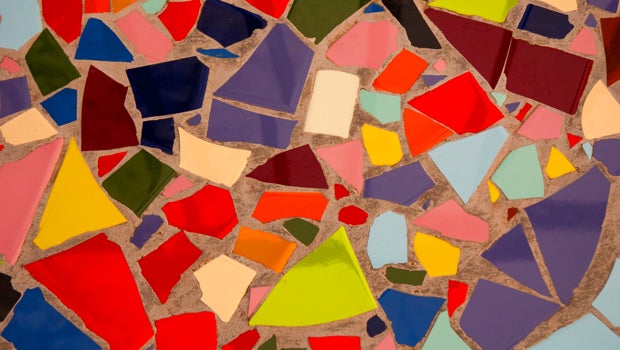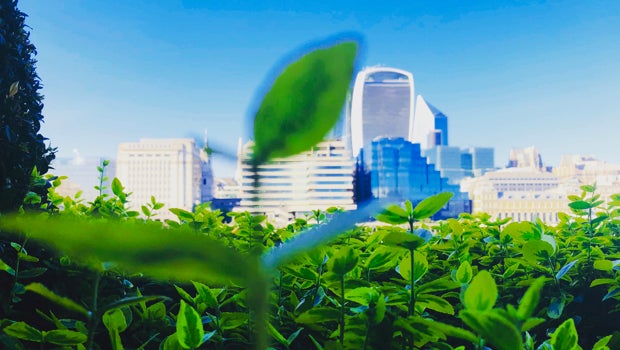Many will remember a day this spring when the COVID-19 pandemic first hit home in that most mundane but vital of activities: shopping. Whether it was a surprise wait to enter a grocery store, a run on toilet paper, or the sight of a retail mainstay shuttered for lockdown, consumption was one of the first markers of a new before and after in society.
In the months since, trends ranging from income loss to an increased reliance on online shopping have only further transformed consumer behavior. So, too, have other developments, such as renewed calls for companies to tackle racial injustice and inequality. Reflecting on all the changes of 2020 brings a fresh perspective on what was understood to be business as usual not so long ago.
What new challenges do companies and consumers face now and how can they use this moment to encourage shifts to more responsible consumption?

Wilfrid Laurier University Professor Kalyani Menon discusses this and more in our wide-ranging interview on her Ideas Worth Teaching Award-winning course, Marketing and Society.
Your course highlights the visible and hidden ways marketing impacts our “physical, psychological, sociological, cultural and economic world.” What hidden impacts of marketing have been revealed by the massive shifts the pandemic has brought to all of our “worlds”?
We’ve been a consumer society for a very long time. But never before have we had to so forcefully and painfully acknowledge that fact. This pandemic has required everyone to face the extent to which our lives are paralyzed without consumption, without the marketplace. Consumption is the scaffolding on which hangs everything, from how the economy works to how we manage our family time.
What this pandemic has also shown so dramatically is the extent to which it is impossible for us to step away from our roles as consumers. Even as regular consumption shuts down, we reach for new consumption practices. Consider face masks and how quickly they transformed from being an annoying, hopefully short-term necessity, to a symbol of one’s personality, to a status symbol. Fashion magazines feature “must-have” masks, and you can buy hilarious, personalized masks on Etsy. Choosing masks is fun, a distraction from everything else. Consider the run on toilet paper in the early days of Covid. Panic-buying and hoarding are important ways to cope with uncertainty, to exercise control, no matter how displaced, over an uncontrollable situation. None of this is new, of course, but has now been forced to the surface. We communicate through products, we cope through products, we exercise control through products.
One of the major assignments in this course is a personal consumption audit, with the goal of helping students become more reflective, conscious consumers. As many of our spending patterns and buying routines have changed during recent months, what new challenges do consumers face, and do you see this as an opportunity for more responsible consumerism?
We are involuntary participants in perhaps the largest, most challenging and potentially most impactful social experiment seen in recent times. We went from being members of a consumer society to seeing our usual consumption behaviour disappearing, practically overnight. Overnight we stopped our morning coffee runs, wondering what to wear, where to vacation, what to eat, stopped driving, postponed home improvement projects.
This sudden contraction of our lives has been painful. But there has been one significant, positive outcome. As the economy shrunk, the environment improved. The less we consumed, the clearer the skies became. It’ll be very hard for anyone to continue denying the environmental impact of commercial activity. Of course, there is a lot more to environmental health than clean air, but clean air is quite important!
Now that we’ve been forced into the most responsible form of consumption – consuming less, and we’ve witnessed the environmental outcomes of responsible consumption, we have two questions before us. One, how do we navigate our way through this painful experiment in consuming less, and two, how do we use this experience once the pandemic is done? This experiment is no doubt painful, particularly for the more vulnerable. It’s natural that we want to get away from it, back to the way things were. But if we can hold on to this constrained and therefore responsible consumption for longer, perhaps even after a vaccine is found, we have a tremendous opportunity to experiment with low-growth strategies. To put it somewhat glibly, perhaps we could find a way to continue driving less and improving air quality without hurting the livelihood of employees of car companies.
The challenge therefore is, how can individuals and institutions calibrate consumption levels to, at the very least, maintain the positive impact on the environment without the negative impact on people’s livelihood?
Has anything surprised you about how companies are using marketing to respond to the multiple crises (racial justice, health, economic) now underway? And what crisis-related questions should leaders ask themselves as they embark on future marketing strategies?
The usual response to such crises is limited to sloganeering, and we are still seeing plenty of that. Sloganeering is lazy, easy, vacuous, and does more for the brand than for anything else. But this time, there also seem to be more meaningful changes – for example, Netflix’s patronage of Black-owned banks, the Facebook boycott, Coke’s stand against social media, Uber Eats waiving the delivery fee for Black-owned restaurants, changes to Aunt Jemima and Uncle Ben’s. These are steps in the right direction, but marketing has a long way to go.
To participate in meaningful action, to be proactive rather than reactive, marketers have to abandon the narrow brand and market-share focused perspective that pervades the sector. They have to understand the enormous impact they have on not just what people buy, but the social and cultural environment people live in. For example, social media is not just a product that connects people and makes money while doing it. It is a product that shapes public conversation. A package design does more than grab attention in a store – it reflects and shapes cultural images. Celebrity endorsements do more than increase brand awareness – they foster unattainable aspirations and self-esteem issues.
We (marketing educators) have much to answer for. We’ve taught marketers to ask, “how will strategy X help the brand?” instead of asking “how will strategy X impact consumers of the brand and the world they live in?” And that change is what I hope to make in my course.
As alumni from your course go into leadership positions across industries and sectors, what is the one lesson that you hope will stick with them throughout their careers?
The need for perspective-taking, to understand the world they shape for their consumers, from the consumer’s perspective. Perspective-taking is not about studying data to identify a market segment that will buy your product. It is about understanding what your product will do to and for consumers in their multi-faceted lives. It requires the ability to be a reflective and critical thinker, to experience empathy, but it’s not hard to do. I remind my students that they play two roles in the marketplace – they are both marketers and consumers. They may or may not consume the product they market, but they most definitely consume numerous products others market. They should tap into their experience as a consumer, as one at the receiving end of marketing strategies, when they develop strategies for their products, in order to truly understand what happens when marketers see consumers only as market share points.
![]()
Interested in more innovative insights for business education? Browse our complete collection of interviews with outstanding educators, and subscribe to our weekly Ideas Worth Teaching digest!

